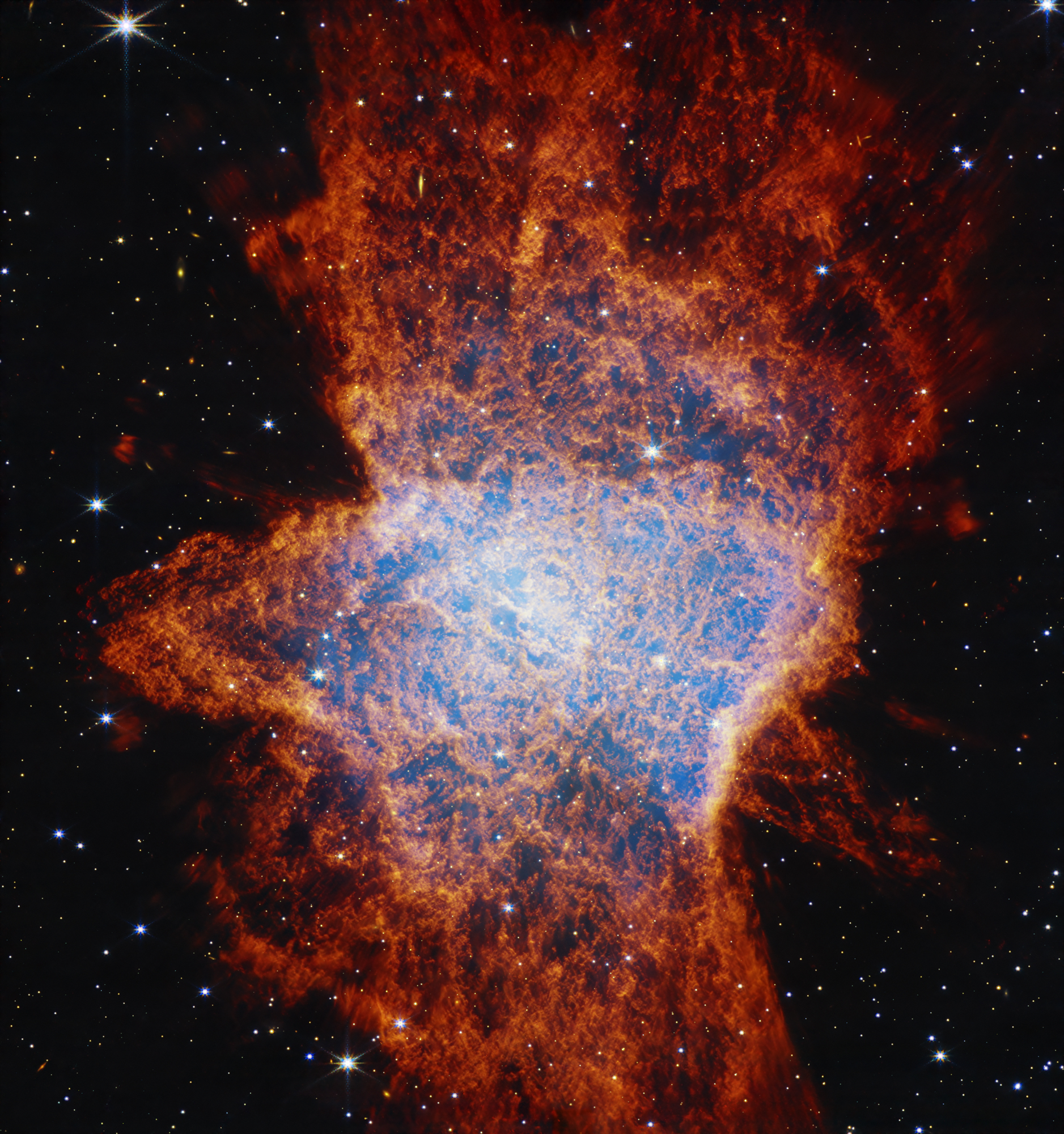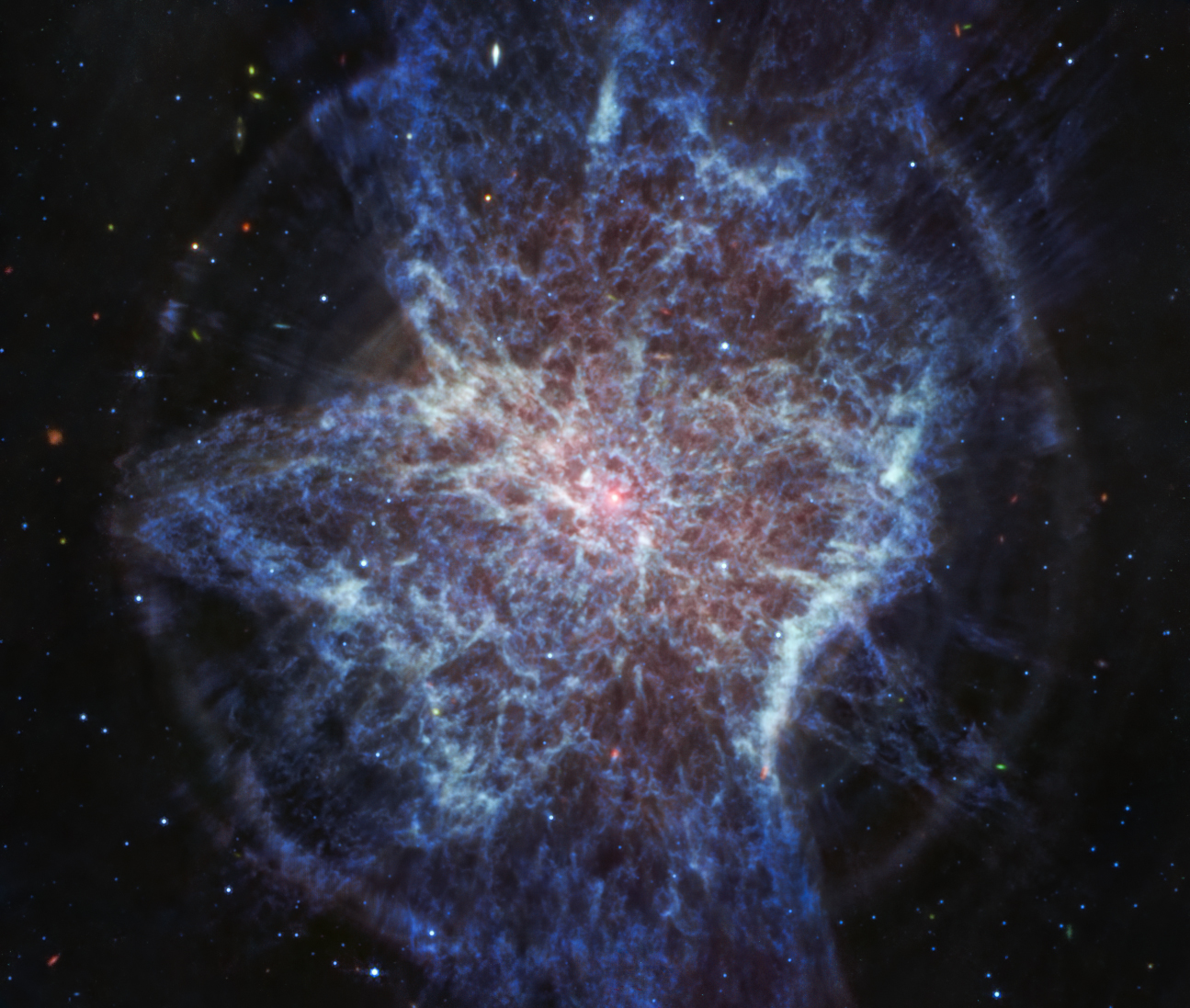-
info@forensicss.com
Send Email
-
11400 West Olympic Blvd, Los Angeles, CA 90064
310-270-0598
Confidentiality Guaranteed
310-270-0598
Confidentiality Guaranteed
Blog Details
-
ForensicsS | Private Detective & Digital Forensics Investigation Experts > News > Uncategorized > JWST sees beauty in the death of a well known individual, presents a preview of what’s in retailer for our solar
Jul
JWST sees beauty in the death of a well known individual, presents a preview of what’s in retailer for our solar
Private investigator
This splash of paint on the canvas of dwelling is the planetary nebula NGC 6072, the demise embers of a ruined well-known person who has reached the terminate of its solar-esteem existence. Cocooned contained in the nebula, within its have ejected outer layers, the fading well-known individual is present process a transformation into a white dwarf.
Because the
NGC 6072 is veil in the constellation of
A narrative of two stars

Some tens of thousands of years ago, the nuclear furnace at the core of the extra massive of a pair of stars started stuttering. Because the outward rigidity of radiation from the
Many planetary nebulas appear cylindrical, bi-polar, or spherical, but NGC 6072 is utterly different. It be esteem a misshapen splodge of color on the sky. The look viewed by the JWST’s Diagram-Infrared Camera (NIRCam) reveals extra than one pairs of outflows coming from the demise well-known individual and pointing in varied instructions. One outflow is visible from the 11 o’clock to the 5 o’clock place. But every other could possibly possibly possibly be viewed from 1 o’clock to 7 o’clock, and there is a imaginable third outflow that appears to be like vertical in the image, from 12 o’clock to 6 o’clock.
It is thought that the changing path of those outflows is a results of gravitational interactions between the demise central well-known individual and its partner well-known individual.
The quite quite loads of colours (these are false colours because they want to indicate infrared gentle that we can not see with our eyes) also expose us about the nebula’s properties. By this point, the central well-known individual has shed up to 80% of its total mass, and we see this in the clumps of gas and dirt painted darkish orange in the image. Quite empty, mud-free regions appear blue. The clumpiness will possible be caused by denser patches of molecular hydrogen gas being protected from the white dwarf’s harsh ultraviolet gentle by veils of thick mud. In the meantime, the uncovered gas spherical these clumps (closer to the coronary heart of the nebula) is being ionized by the ultraviolet gentle.
Breaking dwelling files, basically the most up-to-date updates on rocket launches, skywatching events and extra!
Extending into longer wavelengths, the JWST’s Mid-Infrared Instrument (MIRI) captures a assortment of concentric rings radiating out from the center of the nebula. These rings will possible be extra proof for a second well-known individual. As that second well-known individual orbits the demise well-known individual, it cuts by the cloth being ejected, carving gaps that propagate outwards because the ejected cloth strikes away. On the assorted hand, an quite quite loads of rationalization for the rings in most cases is a assortment of pulsations contained in the demise well-known person who take hold of place every few thousand years.

Thanks to MIRI’s ability to seem gentle that won’t absorbed by mud, it opens a window into the coronary heart of the nebula the place we can see the central well-known individual system as a pinkish-white dot. On the assorted hand, if there is a partner well-known individual, it’s so end to the demise well-known person who no longer even the JWST can unravel the two as separate objects.
Whatever the case, the JWST’s photos emphasize factual how pretty and abnormal the deaths of stars could possibly possibly possibly be, and foretell the future of our have solar in about 5 billion years’ time.
Join our Residence Forums to support talking dwelling on basically the most up-to-date missions, night sky and extra! And if you would possibly possibly possibly fair safe a files tip, correction or observation, let us know at: team@dwelling.com.
Keith Cooper is a freelance science journalist and editor in the United Kingdom, and has a stage in physics and astrophysics from the College of Manchester. He’s the author of “The Contact Paradox: Challenging Our Assumptions in the Search for Extraterrestrial Intelligence” (Bloomsbury Sigma, 2020) and has written articles on astronomy, dwelling, physics and astrobiology for a large number of magazines and internet sites.
Recent Posts
- Ethiopian Migrants Face Kidnappings and Death, Leaving Within the aid of Heartbroken Households
- Andrew Tate Hits TikTok & Zuckerberg’s Meta For $100M For Kicking Ex-Kickboxer Off Platforms Support In 2022: “It’s Correct Vs Inappropriate,” Accused Rapist Insists
- Conservatives mock Comey over Taylor Swift video
- The generation of AI hacking has arrived
- Hackers unleash torrent from Norwegian dam, releasing 132 gallons per 2nd for four hours

